Automate tests
Many behavioural tests are straightforward, with ANY-maze simply tracking the animal’s movements. However, tests such as Operant or Fear conditioning can include complex rules for what should happen as time passes or if the animal does certain things.
ANY-maze uses procedures to define these rules. Procedures are built using drag-and-drop from a few simple to understand statements. For example, the procedure on the right specifies that 30 seconds after the test starts a tone should be played, then 5 seconds after that a shock should be administered.
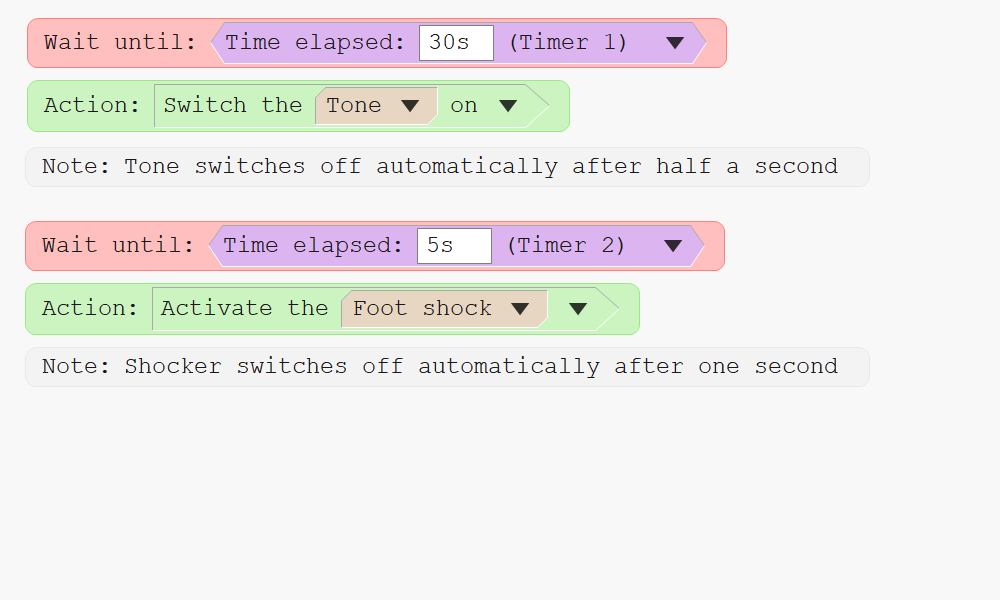
Making decisions
In tests such as Operant conditioning, the animal may be rewarded for making a correct choice – perhaps it should press a lever only when a light on the left side of the cage is lit; if it does this it receives a reward, otherwise a mild foot shock is administered.
It’s easy to set up rules such as this using procedures – see the example on the right.
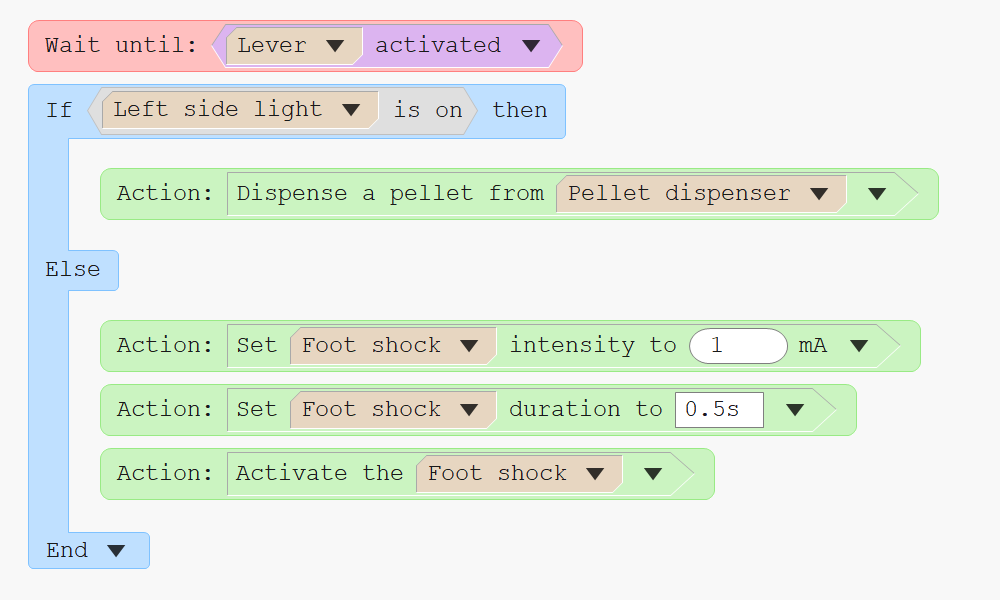
Use multiple procedures
Complex Operant conditioning tests can include many devices, for example, doors separating multiple compartments, with lights, levers and pellet dispensers in each compartment. The rules governing how such tests are performed are usually correspondingly complicated.
Writing a single procedure to automate these tests can be difficult, but breaking the rules into different procedures can make things dramatically simpler. ANY-maze allows you to create any number of procedures, all of which are processed simultaneously.
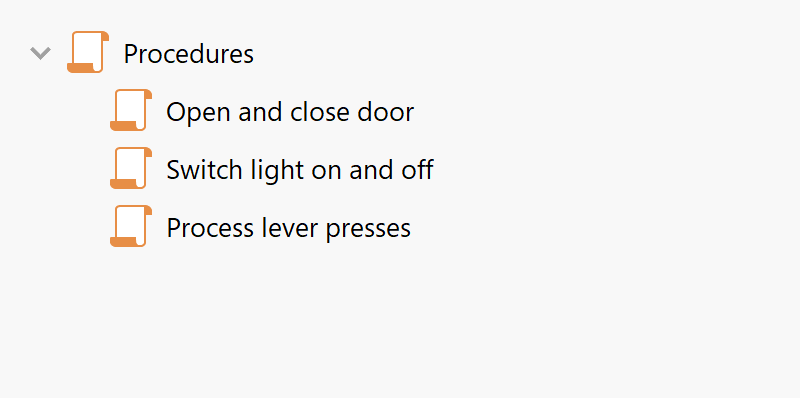
Procedure features
- Simple drag and drop interface
- Just 8 principal statements
- Procedures can respond to over 50 different events
- Procedures can perform more than 70 different actions
- Full control of all the I/O devices that ANY-maze supports
- Wide range of maths functions available
- Functions to generate random numbers
- Support for variables, including arrays
- Variables can be stored between tests
- Numeric variables can be saved as part of a test's results
- Procedures are checked when you write them and errors are highlighted and explained
- Errors that occur while a test is running are reported at the time and recorded with the test

 Setting up apparatus
Setting up apparatus Video capture & tracking
Video capture & tracking Observing behaviour
Observing behaviour Connecting equipment
Connecting equipment Automating complex tests
Automating complex tests Running tests
Running tests Results
Results Visualising data
Visualising data Analysis
Analysis Transferring data
Transferring data Open field
Open field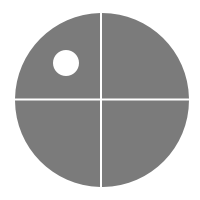 Water-maze
Water-maze Y-maze
Y-maze Fear conditioning
Fear conditioning Novel object
Novel object Barnes maze
Barnes maze Radial arm maze
Radial arm maze Light/dark box
Light/dark box Operant conditioning
Operant conditioning Zebrafish
Zebrafish Computers
Computers Multifunction remote
Multifunction remote Accessories
Accessories Digital interface
Digital interface Optogenetic interface
Optogenetic interface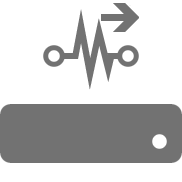 Synchronisation interface
Synchronisation interface Relay interface
Relay interface Audio interface
Audio interface Touch interface
Touch interface Analogue interface
Analogue interface USB TTL cable
USB TTL cable Animal shocker
Animal shocker Components
Components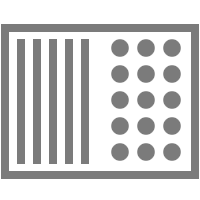 Place preference
Place preference ANY-box
ANY-box T-maze
T-maze Zero maze
Zero maze Hole board
Hole board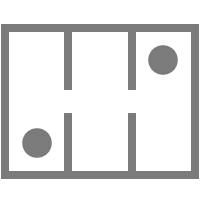 Sociability cage
Sociability cage OPAD
OPAD RAPC
RAPC Waterwheel forced swim test
Waterwheel forced swim test Thermal gradient ring
Thermal gradient ring Operon
Operon Activity Wheel
Activity Wheel Full ANY-maze licence
Full ANY-maze licence Other licence types
Other licence types Developing countries licence
Developing countries licence Contact support
Contact support Support Policy
Support Policy FAQs
FAQs Guides
Guides Downloads
Downloads Send us files
Send us files Activate a licence ID
Activate a licence ID Contact us
Contact us Blog
Blog About
About Testimonials
Testimonials Privacy Policy
Privacy Policy
